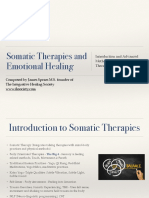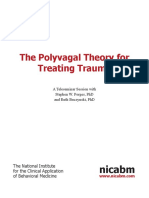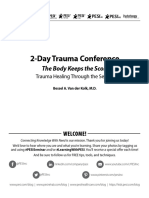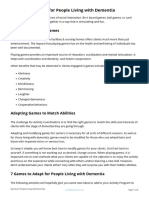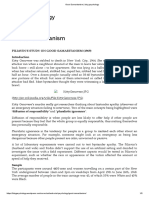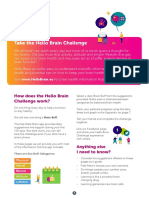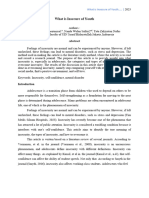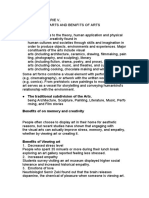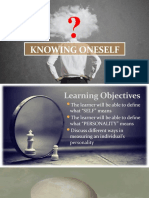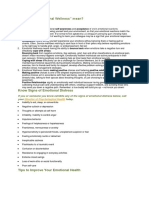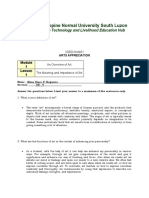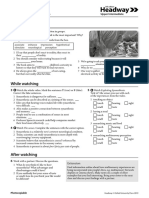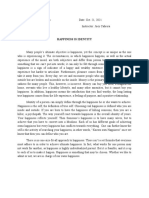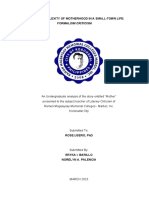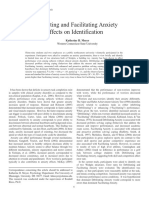5/24/22
Working with Trauma:
Somatic-Based
Interventions to Move
Clients from Surviving
to Thriving
Arriving and Intentions
1
� 5/24/22
Objectives Part 1
Understand Co-Regulation
Enhance Distress Tolerance
5-point check-in
2
� 5/24/22
A Unified
Approach to
Somatic
Psychology
Trauma
3
� 5/24/22
Contaminated by the Past
A continuum of Traumatic Stress
§
4
� 5/24/22
Developmental Trauma
Mind-Body Perspectives on Traumatic
Stress
10
5
� 5/24/22
Compelled to Defend
11
Somatic Psychology:
Core Principles
12
6
� 5/24/22
The Science of Embodiment
(Alan Fogel, Body Sense)
13
Somatic Intelligence
(Antonio Damasio,
The Feeling of What
Happens)
14
7
� 5/24/22
Intercorporeality
and Embodied
Culture
15
Somatic therapies are not just a
set of interventions for the
client, they are the foundation
for the attuned presence of the
practitioner.
16
8
� 5/24/22
Mindfulness and “Bodyfulness” (Caldwell):
A Foundation of Presence
17
The Physiology of
Stress and Trauma
18
9
� 5/24/22
Healthy Stress Response
Stress or Mobilization Resolution
Trauma Increased through and
Cortisols
exposure action Homeostasis
• Exposure to a stressful (or traumatic) event
• Increase in cortisol
• Mobilization Response: (fight/flight): Feel, Move, Run, Protect, Shake
• Stress activated response systems achieve homeostasis (cortisol levels return to
baseline)
• Healthy Immobilization Response: Rest, Regeneration, Renewal of the body
19
Unresolved Stress and Trauma
Stress or Defensive
Increased Blocked
Trauma action
Cortisol Mobilization
exposure remains
• Exposure to a stressful (or traumatic) event
• Increase in cortisol
• Incomplete Mobilization (Thwarted Instincts)
•Remain in high activation freeze
•Immobilization into helplessness or collapse
• Body and mind do not experience resolution
• Feels as if threat is ongoing
20
10
� 5/24/22
The Autonomic Nervous System
Autonomic Nervous
System
Sympathetic Nervous Parasympathetic
System Nervous System
Threat Safety Threat Safety
Response: Response: Response: Response:
Mobilization Immobilization Immobilization
Mobilization into Rest and
into Fight or into Play and into Collapse
Flight (Faint Response) Digest
Excitement
21
What Happens in Vagus…
Image Credit: Gabriel Kram
22
11
� 5/24/22
Polyvagal Theory (Steven Porges)
T I E R E D R E S P O N S E TO T H R E AT
Social Nervous System (Ventral Vagal Circuit): engages a
fawn/submit/appeasement survival strategy
Sympathetic N. S.: Mobilization into Fight and Flight.
Scared, Angry.
Parasympathetic N.S.: Immobilize, “faint,” dissociation,
depressed, hopeless, helpless, numb.
23
Our Defenses are Adaptive Survival Strategies
Freeze Flight Fight Fawn Submit Faint
• Attentive • Startles • Tension in • Highly aware • Focused on • Collapsed
Immobility easily jaw, arms, of other’s attachment Immobility
• Feeling • Hyper- hands, legs somatic cues even if to • Reduced
frozen, vigilant • Audible • Posture leans the heartrate
cannot • Breathing breath, forward, chin perpetrator • Eyes
move rapidly into exerted forward • Surrender a downcast
• Increased upper chest exhale • Eyes reaching will of one’s • Breath is
heart rate • Eyes darting • Aggressive or scanning own shallow
• Breath is • Racing posturing • Caretaking or • Longing to • Nausea,
held thoughts • Furrowed co- belong dizziness,
• Deer in the • Jumpy or brow, eyes dependence • Loss of a blurred vision
headlights fidgeting narrowed • Disconnected “sense of • Disgust, lips
• Eyes are • Difficulty • Can’t relax from own self” curled down
still slowing in body body or needs • Hunched • Numbness,
• Hyper down or shoulders disconnected
aware of connecting • Dulling of from body
body to the body. the senses
sensations
24
12
� 5/24/22
Fawn: When a person responds to threat by trying to
appease or please another (Walker, 2013)
Goal is to forestall an attacker by caring for their emotional
or physical needs.
Submissive response takes over driven by the
Fawn and parasympathetic nervous system.
Submit
Submitting is often driven by an attachment need
Often associated with a conflict between fear driven need
for survival and attachment driven need for social
connection (Fisher, 2017)
Attachment to the perpetrator (Knipe, 2018)
25
Conditioned Immobilization
26
13
� 5/24/22
Social Nervous System “Hybrid” States
I N T I M E S O F S A F E TY
VVC/Social Engagement System: Secure,
Connected, Clear, Choice, Competent, Hopeful,
Understood
Ventral Vagal Circuit with Sympathetic N.S.:
Mobilization for play, sexual arousal, curiosity,
joy, and excitement.
Ventral Vagal Circuit with Dorsal Vagal Circuit.:
Rest, Digest, Relaxation, Sleep, Renewal,
Intimacy, Spirituality
27
Neuroception
28
14
� 5/24/22
Perception of Neuroception
Neuroception can match or mismatch the level of risk
§ Anxiety response in safe situations
§ Inability to activate defense response in unsafe situation
Conscious neuroception
§ Brings perception to autonomic cues in body and mind
to allow for discernment.
§ Is the autonomic response that I am having accurate?
29
• What people, places, or
Ventral Vagal practices help you to
Engagement feel safe and
connected?
• What people, places or
Sympathetic situations bring up feelings
Nervous of fear, panic, or overwhelm?
• What helps you to resource
The System yourself when you are here?
Polyvagal
Ladder
• What people, places or
(Deb Dana) situations bring up feelings
Dorsal Vagal of helplessness or collapse?
Shutdown • What helps you to resource
yourself when you are here?
30
15
� 5/24/22
The Social Engagement
System
31
Glimmers to Glows (Deb Dana)
32
16
� 5/24/22
•
In Practice: Awaken
the Social
Engagement System
33
34
17
� 5/24/22
35
36
18
� 5/24/22
37
Enhancing
Distress Tolerance
through
Co-Regulation
38
19
� 5/24/22
Window of Tolerance (Siegel)
–
Window of Capacity
(Malchiodi)
39
Signs of a Regulated Nervous System
§
§
§
§
§
§
§
40
20
� 5/24/22
The Faux Window of Tolerance
41
The Growth Edge
42
21
� 5/24/22
Top-Down and Bottom-
Up Processing
43
Top-Down or Bottom-Up Interventions
Top-Down Interventions: Bottom-up Interventions:
Psychoeducation Somatic Resources (grounding, conscious
breathing)
Mindfulness of Mind (witness)
Mindfulness of Body
Cognitive Interventions (identifying
negative and positive beliefs, challenging Building affect and sensation tolerance
thinking errors)
Focus on affect and sensations while
Distancing Interventions (Containment) processing traumatic events
Visualization and Imagined Resources Movement based interventions (pushing
(Safe/Peaceful place) with arms, stepping movements, etc.)
44
22
� 5/24/22
Co-Regulation and Mutuality in Therapy
45
External Regulation
in Relationship
46
23
� 5/24/22
Observe the embodied relational experience through changes in:
Eye contact Muscle tone
Breathing Facial Expressions
Posture Voice tone/Prosody
Movement/Gesture Swallowing
Heart rate Alertness
47
Somatic Resonance
Formative Psychology (Keleman)
Somatic reactions that a therapist feels in response to a client.
May provide insight into the inner world of the client.
Might indicate countertransference—body sensations parallel the experience of
the client and relate to material from your own life
Once you feel it, it is your responsible to attend to the sensations with self-care.
48
24
� 5/24/22
Somatic Cues of
Nervous System
Dysregulation
49
Somatic Based Interventions for Co-Regulation
Proximity Awareness: Facing &
Spacing
Pacing: Attending to the pace
of speech, processing, and
somatic awareness
Use of Eye Contact
Use of Voice Tone
50
25
� 5/24/22
Skill: Inviting Spacious Relational Awareness
§
51
The Complex PTSD Treatment Manual (Schwartz, 2021)
52
26
� 5/24/22
The Complex PTSD Treatment Manual (Schwartz, 2021)
53
The Complex PTSD Treatment Manual (Schwartz, 2021)
54
27
� 5/24/22
Distress Tolerance (Boffa et al., 2018)
55
Skill: Build Affect and Sensation Tolerance
56
28
� 5/24/22
Build Affect and Sensation Tolerance
57
29



































